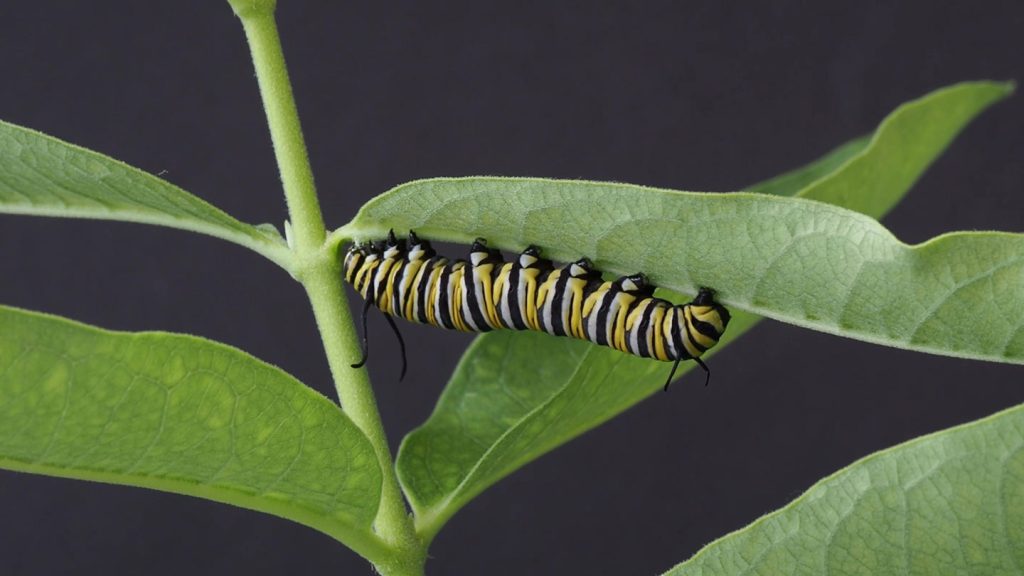Monarch butterfly caterpillars may actually be feeding on the toxic latex produced by milkweed plants instead of avoiding it. This behavior was observed by ecologist Georg Petschenka and his team at the University of Hohenheim in Germany. Very tiny caterpillars can get fatally stuck in the latex, but older caterpillars have developed immunity to the toxins found in the plant’s latex. The older caterpillars can disarm the leaf by making cuts and draining out the latex before consuming it, turning the toxic substance into a harmless vegetable.
Petschenka’s team conducted experiments offering monarch caterpillars a pipette filled with latex, which the caterpillars readily drank. By drinking the latex, the caterpillars build up their own defenses against predators using the milkweed toxins. As the caterpillars grow through five stages, they shift from rejecting the latex to eagerly consuming it, akin to a cat drinking milk. The ability to convert the toxic cardenolides in the latex into less harmful forms helps the caterpillars protect themselves against predators like birds.
The idea of caterpillars drinking latex for protection has been suggested in the past, but the recent experiments conducted by Petschenka and his team confirm this behavior in monarch caterpillars. Younger caterpillars find the latex dangerously gluey, but as they grow older, they develop a taste for it, showing a significant difference in their willingness to consume the defensive substance produced by milkweed plants. The research sheds light on how monarch caterpillars incorporate milkweed toxins into their defense mechanisms.
The study challenges previously held beliefs about how monarch caterpillars gain protection from milkweed toxins by nibbling on leaves. In reality, the older caterpillars create cuts to access the latex and drink it for self-defense. These findings were given a thorough examination by evolutionary biologist Anurag Agrawal of Cornell University, who initially dismissed the idea of caterpillars drinking latex as a necessary evil. However, the study changed his perspective, highlighting the importance of monarch caterpillars’ unique approach to combatting toxins in milkweed plants.
Despite the potential dangers associated with consuming milkweed latex, monarch caterpillars have evolved a way to not only tolerate the toxins but also utilize them for their defense. By harvesting and consuming the latex produced by milkweed plants, the caterpillars are able to build up their own defenses against predators. This discovery sheds light on the intricate relationship between monarch caterpillars and milkweed plants, further highlighting the complexity of the natural world and the strategies organisms use to survive in challenging environments.


